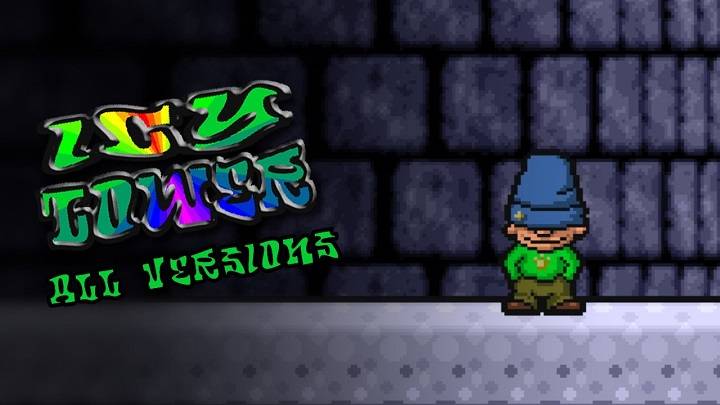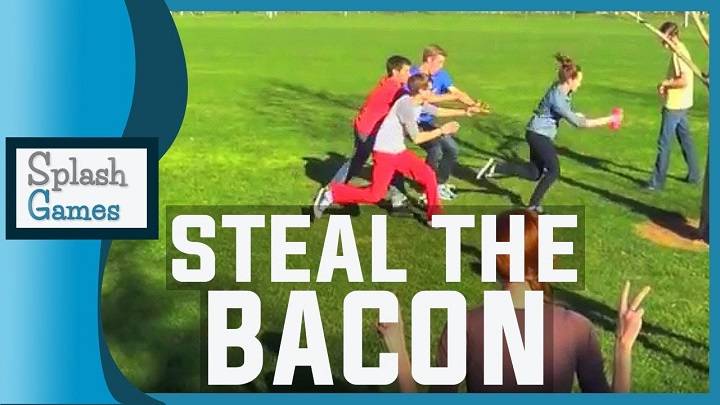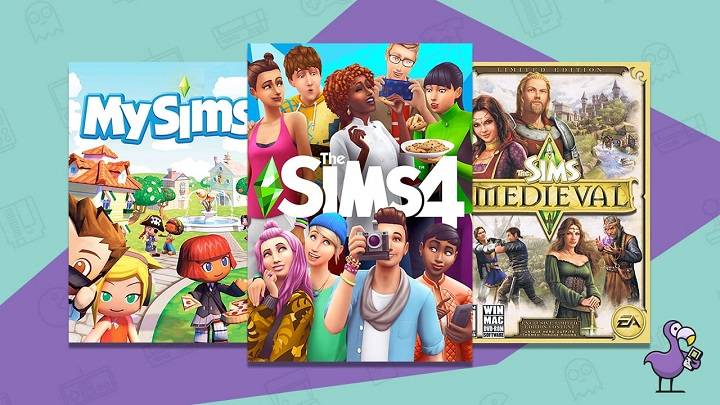Motorcycle Arcade Game: The Throttle-Twisting, Coin-Gulping Ride That Revved Through Gaming History

You step into a dimly lit arcade. Neon signs buzz. The smell of buttered popcorn and machine oil lingers in the air.
You hear it before seeing it. The rumble of a synthetic engine, and the roar of adrenaline. The pulsing music that dares you to race.
You slide a token into the slot.
The machine vibrates. You straddle the plastic seat molded like a sportbike. You grab the handlebars.
And then…
VROOOOOOM.
Your journey begins.
This is a motorcycle arcade game. A machine not just of pixels and polygons, but of speed, swagger, and sheer motorized madness.
It’s not just a racing game. It’s a full-body experience. One that generations of gamers — from ‘80s speed demons to 2000s cruisers, have grown up on. You didn’t just play a motorcycle arcade game, you rode it.
Let’s open the throttle and trace this journey, from Hang-On to Super Bikes 3, through leaning cabinets, biker legends, and arcade duels that made your palms sweat and your heartbeat redline.
Because this isn’t about reaching a finish line. It’s about chasing the wind.
What Is a Motorcycle Arcade Game?

A motorcycle arcade game is a subgenre of arcade racing games where the player controls a motorcycle, often by physically straddling a cabinet resembling a bike, to compete in high-speed races, time trials, or obstacle courses.
Unlike console or PC racers, these games are:
- Physical: You lean into turns. You twist the throttle. You grip handlebars.
- Fast-paced: It has timed checkpoints and aggressive AI. Which keeps the adrenaline maxed out.
- Arcade-focused: Emphasis on fun, challenge, and replay over simulation.
The goal? Cross the finish line, hit checkpoints before time runs out, and beat your last score — or your rival’s.
There’s no need for realism here. These are not simulators. They’re thrill machines.
The Origins: From Hang-On to the Arcade Highway
It all started with one name: Hang-On.
It was developed by Sega and released in 1985. Hang-On wasn’t just a motorcycle game. It was the first full-body arcade racing experience. It was designed by Yu Suzuki. Hang-On introduced the rideable cabinet. Which is a motorcycle-like structure that players could sit on and lean to steer.
Its innovations included:
- Hydraulic movement: The cabinet moves with your body lean.
- Throttle twist: Right-hand acceleration with a grip like a real bike.
- Checkpoint racing: Classic “beat the clock” gameplay loop.
Hang-On changed everything.
Before this, arcade racing was done with steering wheels. After this, developers knew that racing needed to be felt, not just seen.
It produced several sequels and spiritual successors. Including:
- Super Hang-On (1987): Improved graphics and multi-stage races across continents.
- Manx TT Super Bike (1995): Dual-cabinet racing with Isle of Man-inspired courses.
With Hang-On, arcade biking was no longer just gameplay, it was performance art.
The Ride: How Motorcycle Arcade Cabinets Work
At the heart of every motorcycle arcade game is the cabinet. This is what makes them unique.
Core Components:
- Motorcycle Seat: Plastic, rubber, or cushioned faux-leather, sculpted. To mimic a sports bike.
- Handlebars: Complete with throttle. Sometimes brake levers.
- Leaning Mechanism: The cabinet tilts left and right as you lean your body, mapped to steering.
- Screen: CRT in the old days; now high-res LCD displays.
- Pedals (sometimes): For braking or gear shifting.
- Coin/Token Slot: Because every great ride starts with a coin flip.
In modern cabinets, feedback systems, vibration motors, motion platforms, sound boosters, make the ride feel even more visceral.
You weren’t playing a game. You were in the game. And it wasn’t about how fast your thumbs moved, it was about how hard you leaned, how steady your throttle hand was.
Gameplay Mechanics: Timing, Risk, and G-Force Drama
At a glance, motorcycle arcade games look simple: race, avoid crashing, reach checkpoints.
But dive into the mechanics, and you’ll find a ballet of physics, reflexes, and psychological warfare.
1. Steering & Leaning
- Lean left/right to turn.
- Steering is analog, more lean = sharper turn.
- Tight corners require early entry, consistent balance.
2. Acceleration
- Twist the throttle (right grip) to accelerate.
- Some games allow wheelies when you throttle hard at low speeds.
3. Braking / Downshifting
- Rarely used in early arcade games, speed is prioritized.
- In later titles, like Super Bikes 3, braking became essential on complex tracks.
4. Time Checkpoints
- Most games have a countdown timer.
- You must pass through checkpoints to gain more time.
- Miss one? Game over.
5. Opponent AI
- Usually rubber-banded to keep the pressure up.
- They crash less but aren’t invincible, knock them down, and gain a lead.
6. Hazards
- Oil slicks, broken road sections, or random cars add chaos.
- Some games reward near-misses with bonus points or time extensions.
Mastering these mechanics wasn’t easy. But the learning curve was smooth, and the rewards were pure endorphins.
Legendary Titles: The Kings of the Coin-Op Road

Let’s hit the brakes and admire some of the most iconic motorcycle arcade games to ever grace the arcade floor.
1. Hang-On (1985)
- The OG.
- Cabinet that leans with your body.
- Inspired thousands of copycats.
2. Super Hang-On (1987)
- Global tracks. Such as: Asia, Europe, Africa, Americas.
- Upgraded cabinet and graphics.
- One of the most loved Sega racers.
3. Manx TT Super Bike (1995)
- Dual-player cabinets.
- Based on the Isle of Man TT.
- Exhilarating realism and split-path racing.
4. Harley-Davidson & L.A. Riders (1997)
- Open-world feel.
- Licensed Harley-Davidson bikes.
- Wildly different feel — heavy, slower, more about vibe than speed.
5. Road Burners (1999)
- Multiplayer linked gameplay (up to 8).
- Real-world cities like San Francisco and Paris.
- Explosive, arcade-first approach.
6. MotoGP (2006 – Present)
- From Namco / Raw Thrills.
- Real MotoGP licenses, modern graphics.
- Tracks based on real-world circuits.
7. Super Bikes Series (2008–2023)
- Raw Thrills’ biggest hit.
- Wild, fast-paced, over-the-top.
- Real bikes, neon cities, monster trucks, and stunt physics.
- The 3rd entry has touchscreen UI, online leaderboards, and bike upgrades.
These games weren’t just playables, they were landmarks.
Every arcade had at least one. And every gamer had a memory with them.
Super Bikes: The Modern Day Champion
When people say “motorcycle arcade game” in the 2020s, chances are they’re thinking of one name: Super Bikes by Raw Thrills.
Here’s why it’s king:
- Crazy Speed: Up to 200+ mph racing speeds.
- Over-the-Top Tracks: Dino Island, Metro City, Arctic Blast, and more.
- Licensed Motorcycles: Kawasaki Ninja, Ducati Monster, Yamaha R1.
- Explosive Power-Ups: Nitro boosts, stunt ramps, shortcuts.
- Online Features: Player profiles, achievements, weekly tournaments.
Super Bikes is less simulator, more Fast & Furious on nitrous.
The cabinet is sleek. The visuals are retina-melting. The feedback is intense.
And it keeps evolving, the latest models include touchscreen start screens, profile logins, and even personalized ride stats.
Multiplayer Mayhem: The Joy of Side-by-Side Racing
Few arcade moments compare to this:
Your friend chooses the red bike. You go blue.
Countdown begins.
3…2…1…
You both slam forward, the cabinets vibrating in sync.
You lean. You dodge. You shout as you overtake. They lean harder. You both hit a jump. Who lands first?
Multiplayer racing in arcade motorcycle games is theater.
- Linked Cabinets: Most major games offer 2–8 player setups.
- Trash Talk Central: Lean into your rival and bump? That’s part of the game.
- Shared High Scores: Add bragging rights.
For many, it wasn’t about finishing first. It was about beating your friend, or your rival stranger, by one checkpoint.
Soundtrack and SFX: The Engine Roars That Stayed With Us
You can’t talk about arcade racers without talking about sound.
Motorcycle arcade games have some of the most iconic sound design ever:
- Engine Revs: Custom samples for each bike.
- Screeching Brakes: Especially in tight turns.
- Crash Explosions: Over-the-top and glorious.
- Voice-Overs: “Checkpoint!”, “You lose!”, “Final lap!”
And the music?
Think pounding techno, synth-rock, or early 2000s nu-metal instrumentals.
Sometimes cheesy. Always motivating.
You didn’t need a radio, your race was the soundtrack.
Mods, Hacks, and Home Builds: Bringing the Arcade Home

While arcade cabinets are big, bulky, and often cost thousands, the fandom didn’t stop at the mall.
Fans have recreated motorcycle arcade experiences at home:
- PC Emulators: MAME lets you run classics like Hang-On with keyboard or joystick.
- DIY Arcade Setups: With Raspberry Pi, custom handles, and motion sensors.
- VR Motorcycle Racing: Using VR headsets + motion chairs for realism.
- Arcade1Up & Replicas: Smaller licensed machines for home gaming rooms.
Some passionate hobbyists even built working cabinets from scratch using IKEA parts and Bluetooth controllers.
Where there’s a will, there’s a wheelie.
Online Fan Culture: From Forums to Twitch
Though arcades are fading, the culture of motorcycle games persists:
- YouTube: High-score runs, cabinet reviews, gameplay walkthroughs.
- Twitch: Streaming from arcades, retro game shows.
- Reddit & Discord: Dedicated fan spaces for restoring, modding, and collecting cabinets.
- Speedrun.com: Records for fastest time to finish entire tracks or loop certain levels.
The sense of competition and community is still alive.
Old arcade rats have become retro historians. New gamers discover the magic on mobile ports or emulators.
The Legacy
We’re in a world of ray tracing, 4K textures, and story-driven RPGs. So why do people still return to clunky motorcycle cabinets?
Because of the raw, pure, and timeless appeal.
- Tactile Immersion: No controller. Just grip, lean, twist.
- Instant Gratification: No loading. No menus. Just GO.
- Local Play: A dying breed in gaming, but central here.
- Showmanship: Racing wasn’t just playing. It was a performance.
They’re also a reminder of what games used to be, social spaces. Places where kids met strangers, bonded over scores, and raced until their coins ran out.
The Final Lap
You straddle the bike one last time.
You twist the throttle.
The machine roars.
You’re not in your living room. You’re not on a console.
You’re on a Tokyo street. A neon racetrack. A haunted highway. The world blurs.
This is a motorcycle arcade game, and it’s alive in your heartbeat.
For all its pixel simplicity and analog grit, it’s a monument to what arcade gaming means:
- Feel the game.
- Beat the clock.
- Ride with style.
- Challenge anyone.
- Go one more round.
Because there’s always one more lap.
One more lean.
One more friend to beat.
So if you walk past a machine this weekend, don’t just look.
Slide in that coin. Grip the handles.
And ride.
Because this road never really ends.




